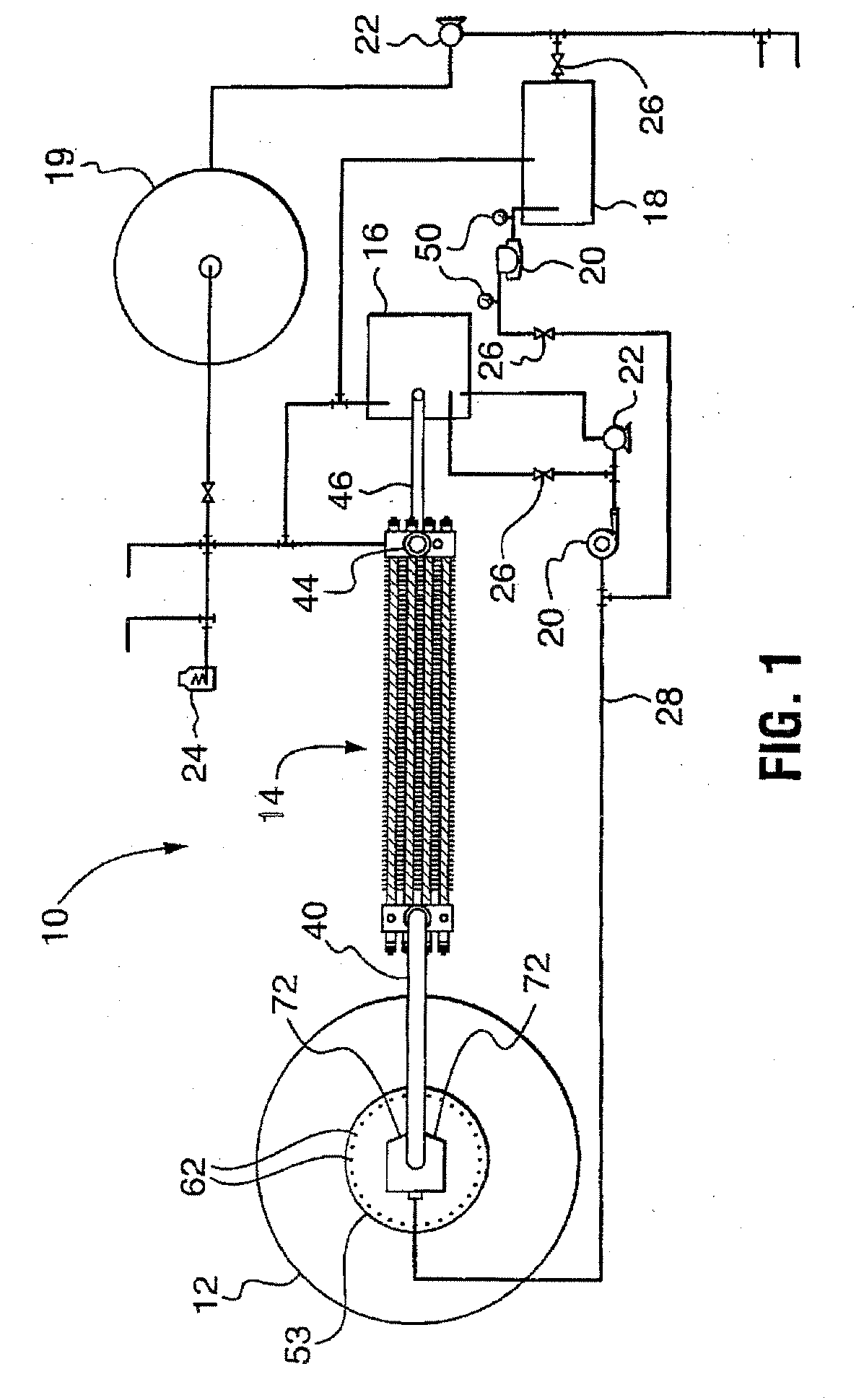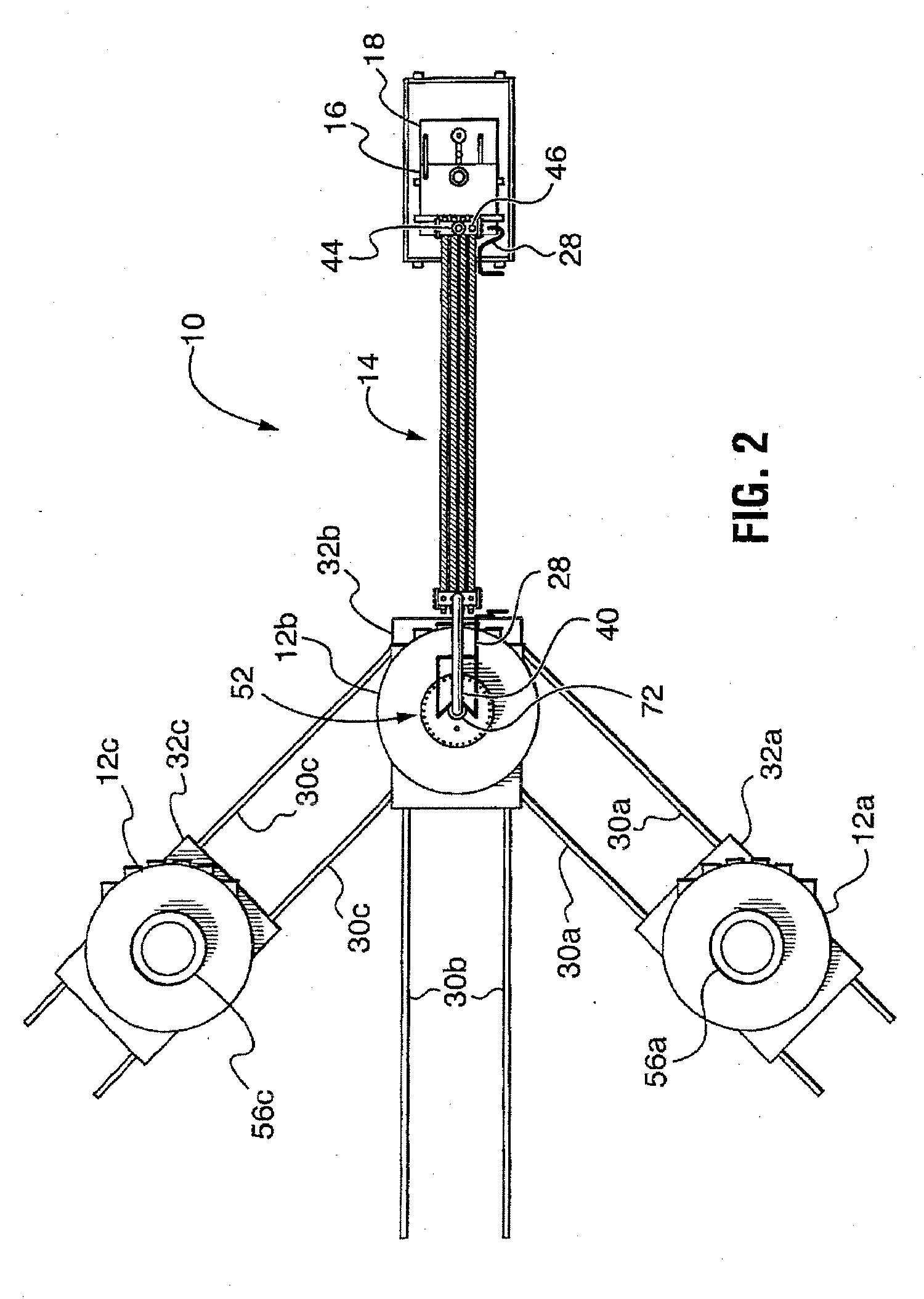Pyrolysis system for waste rubber
a waste rubber and pyrolysis technology, applied in lighting and heating apparatus, production of liquid hydrocarbon mixtures, drying peat, etc., can solve the problems of high cost, high difficulty in accessing, and hazardous storage of large quantities of scrapped waste tires
- Summary
- Abstract
- Description
- Claims
- Application Information
AI Technical Summary
Benefits of technology
Problems solved by technology
Method used
Image
Examples
Embodiment Construction
[0039]An exemplary embodiment of the rubber processing apparatus is shown in accompanying drawings, and is generally referred to by the numeral 10. As can best be seen in FIGS. 1-4, the apparatus 10 comprises at least one transportable oven 12 having heating elements 38 arranged therein (as can best be seen in FIG. 6), although other heating element arrangements and configurations are possible within the scope of this invention, including diverse possible element numbers, locations and control means). The oven 12 is mountable on an oven cart 32 (as best shown in FIG. 3). Cart 32 is transportable on a track 30 which enables the oven 12 to be moved into a position within a central waste rubber loading area / by-product receiving / holding area in a processing facility where scrapped used tires and other rubber waste can be loaded into the oven, after which the oven 12 is moved by the cart 32 into a position where the oven 12 can be demountably engaged with an oven lid structure 52 for pyr...
PUM
| Property | Measurement | Unit |
|---|---|---|
| angle | aaaaa | aaaaa |
| temperature | aaaaa | aaaaa |
| temperature | aaaaa | aaaaa |
Abstract
Description
Claims
Application Information
 Login to View More
Login to View More - R&D
- Intellectual Property
- Life Sciences
- Materials
- Tech Scout
- Unparalleled Data Quality
- Higher Quality Content
- 60% Fewer Hallucinations
Browse by: Latest US Patents, China's latest patents, Technical Efficacy Thesaurus, Application Domain, Technology Topic, Popular Technical Reports.
© 2025 PatSnap. All rights reserved.Legal|Privacy policy|Modern Slavery Act Transparency Statement|Sitemap|About US| Contact US: help@patsnap.com



